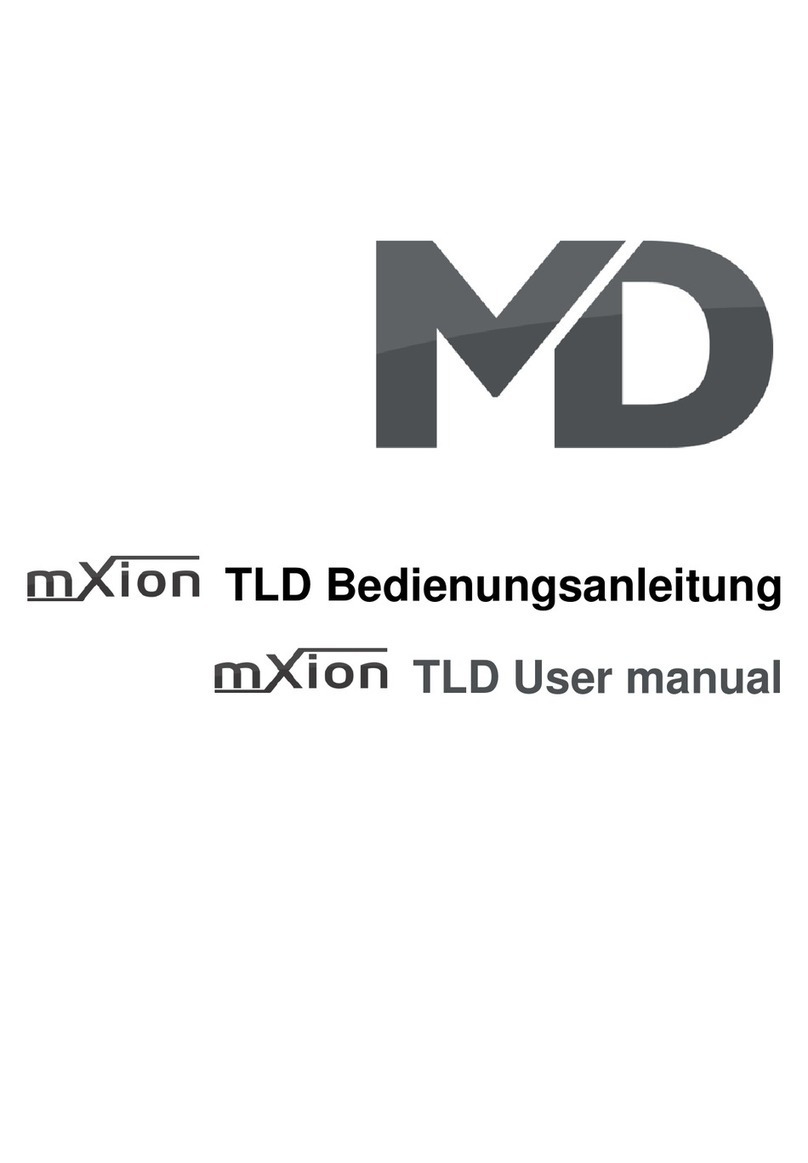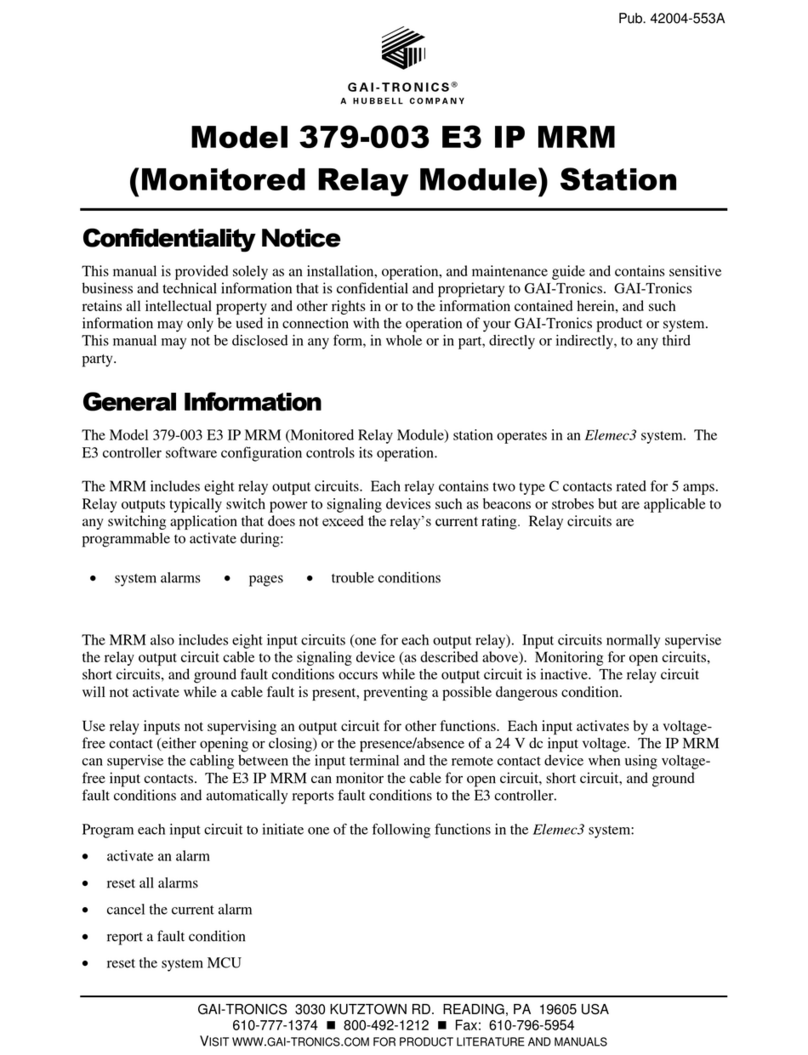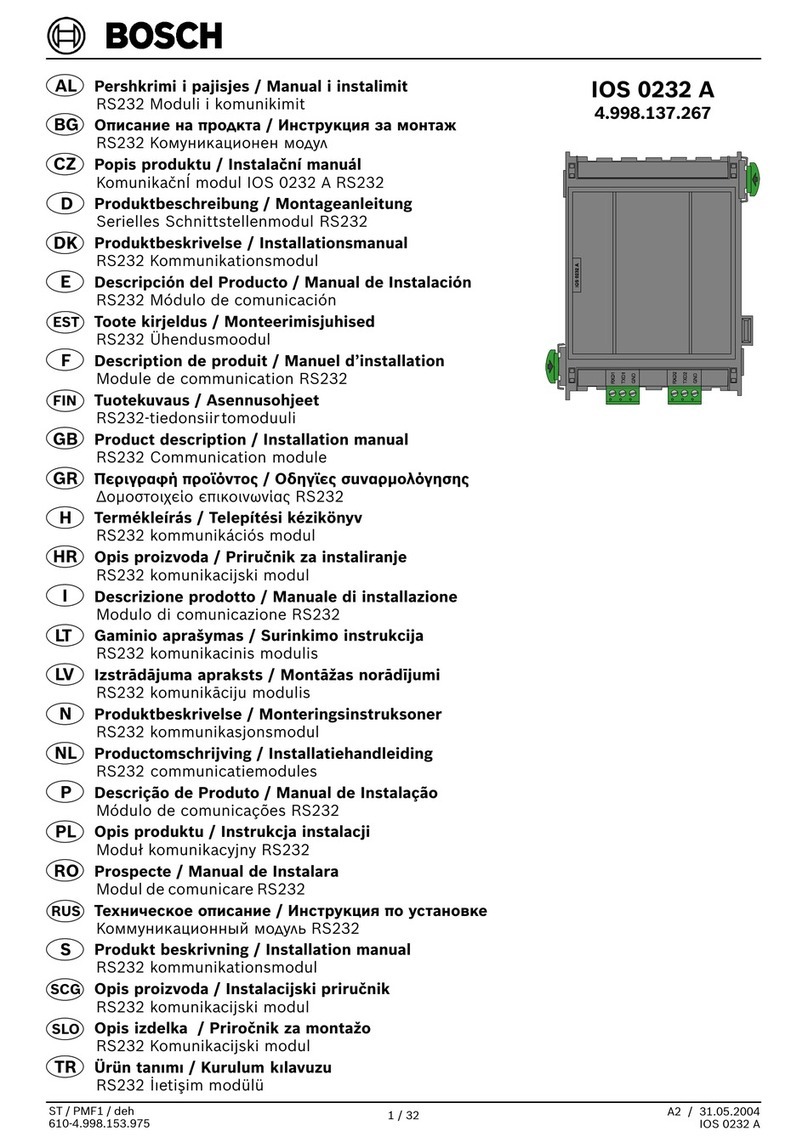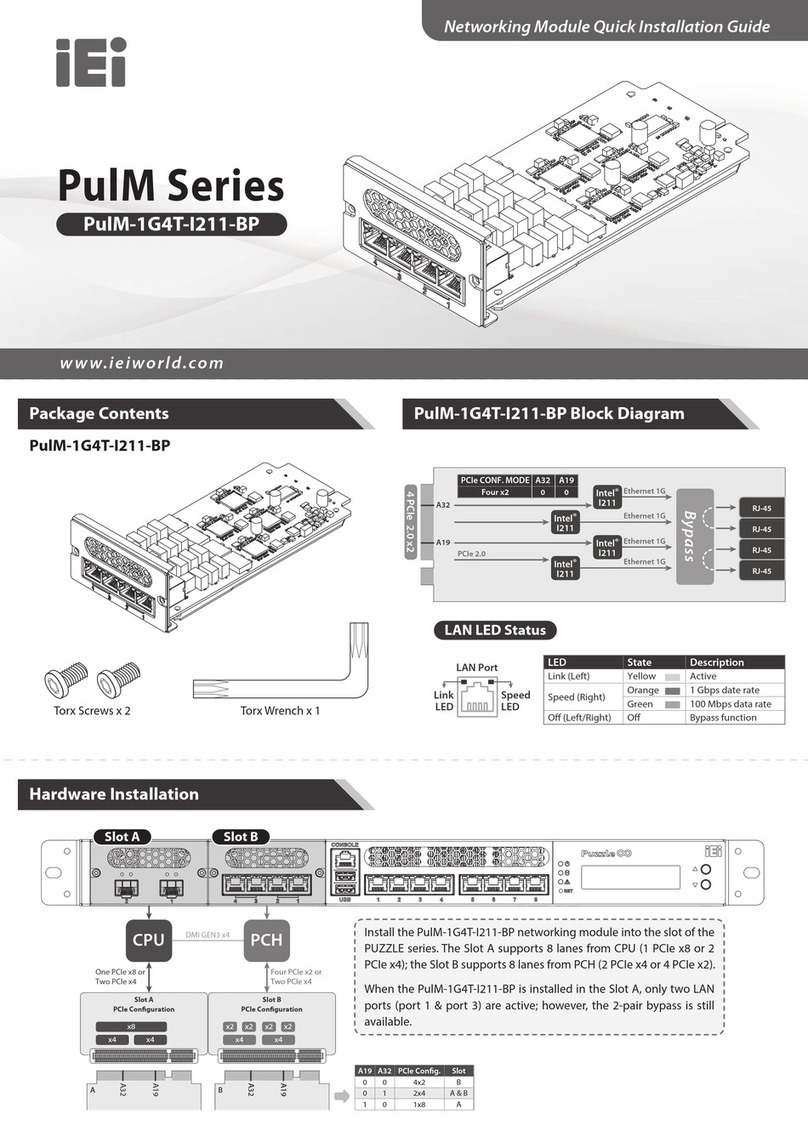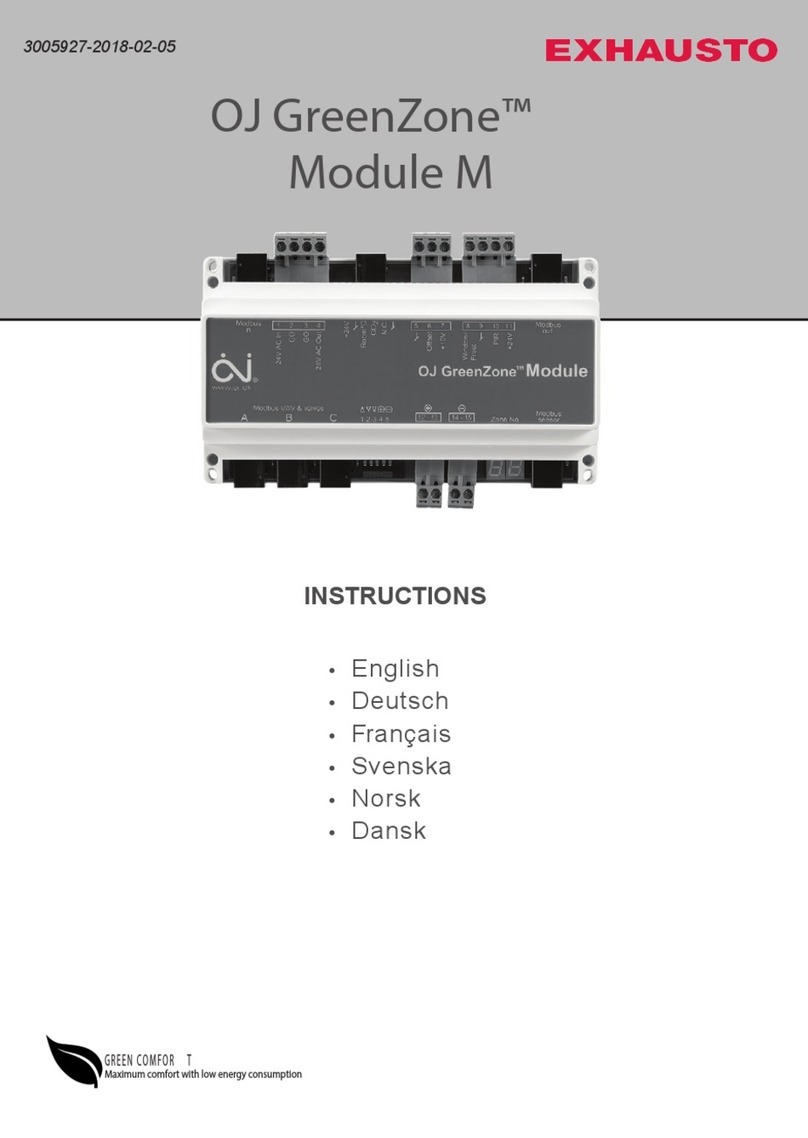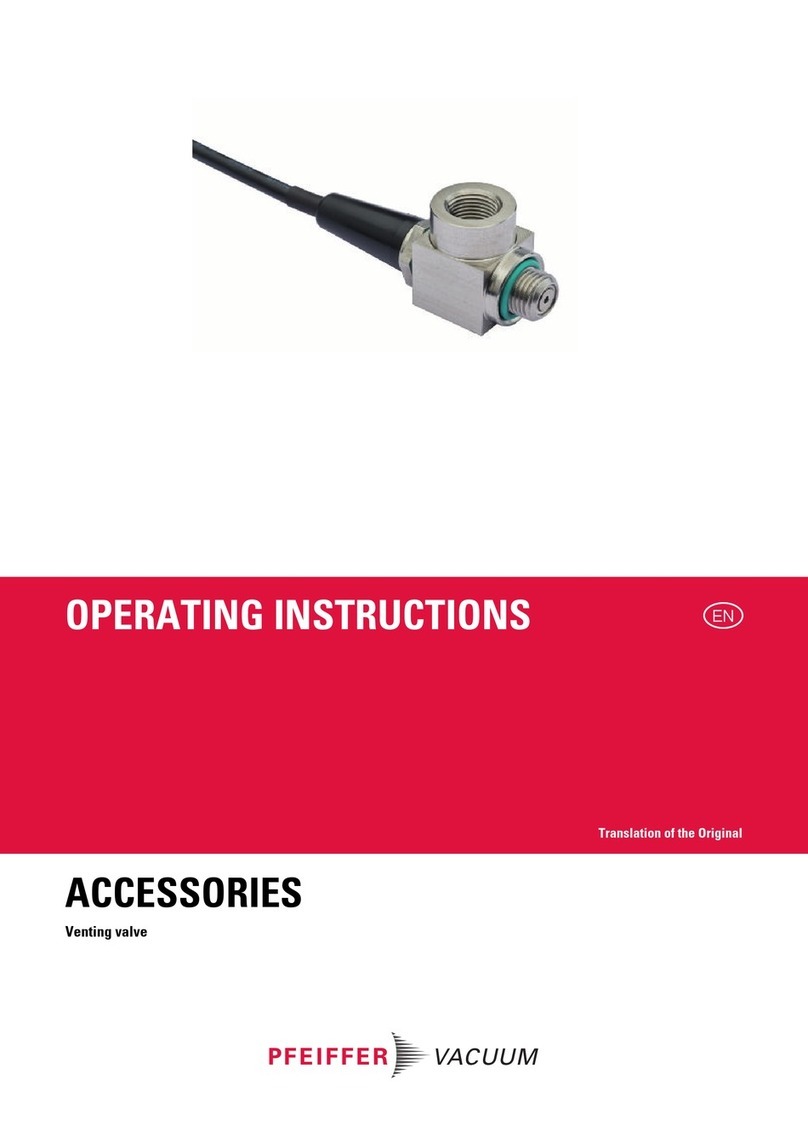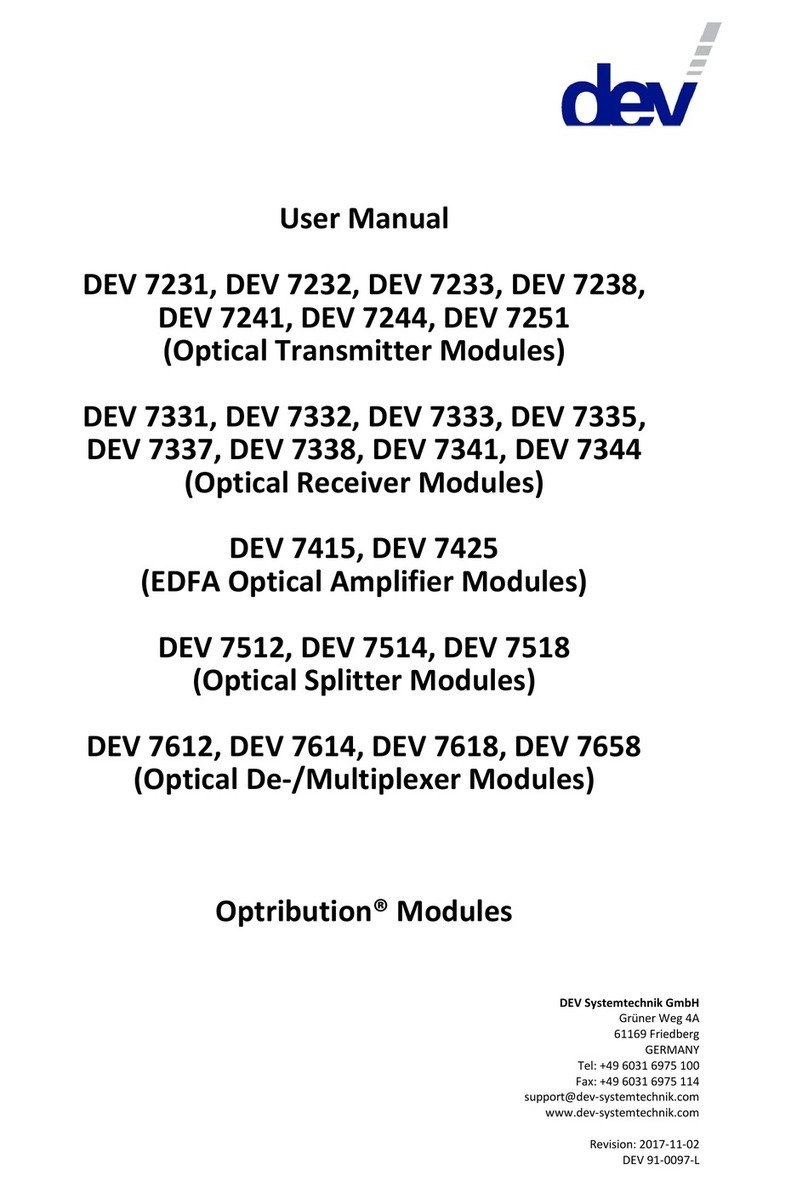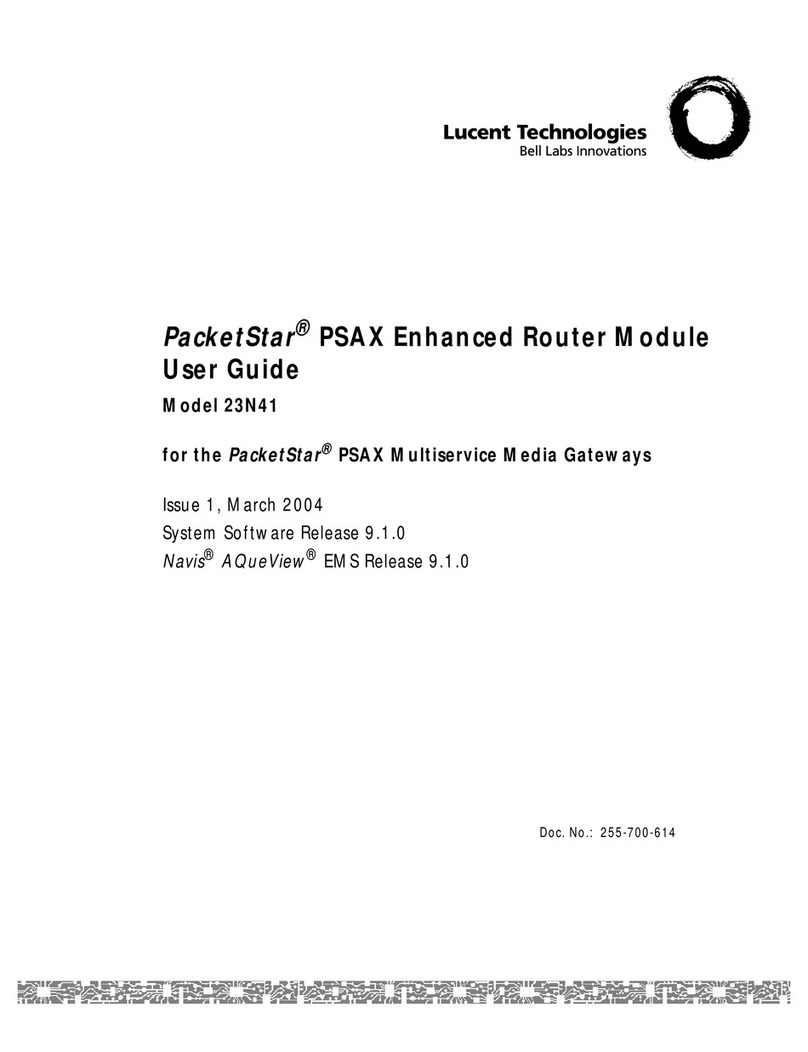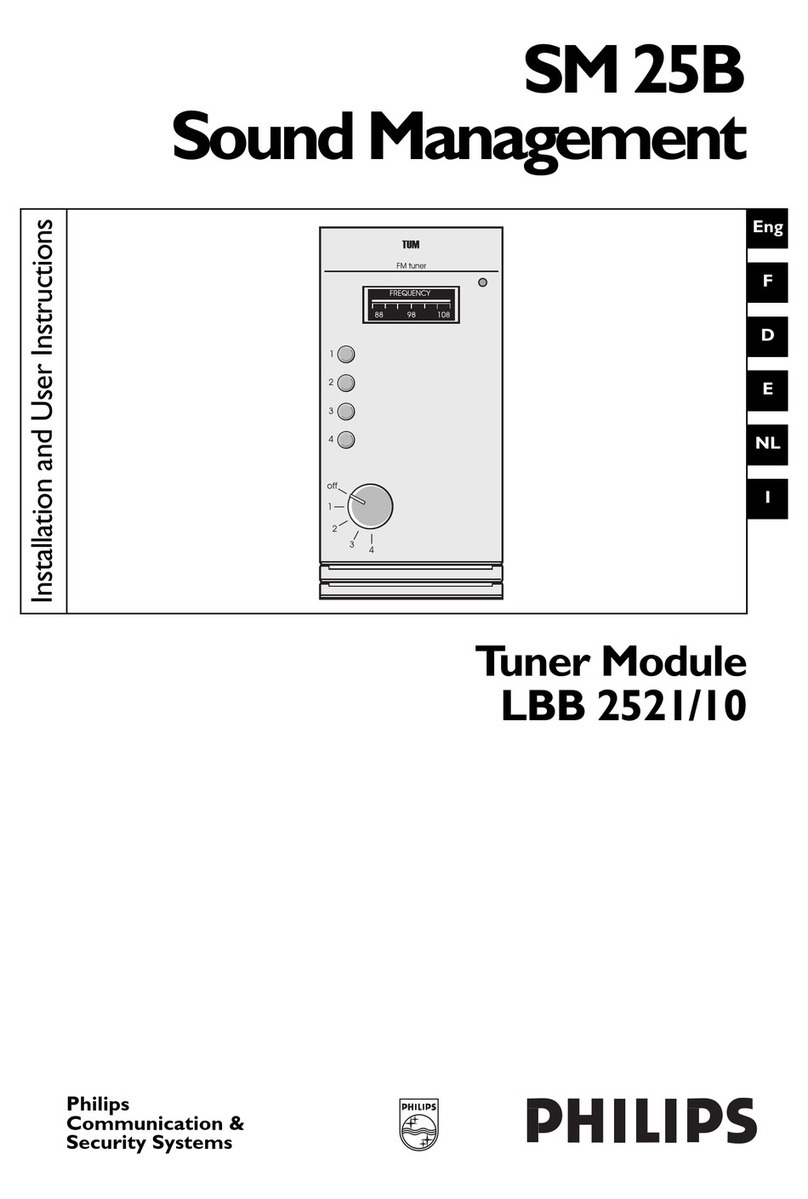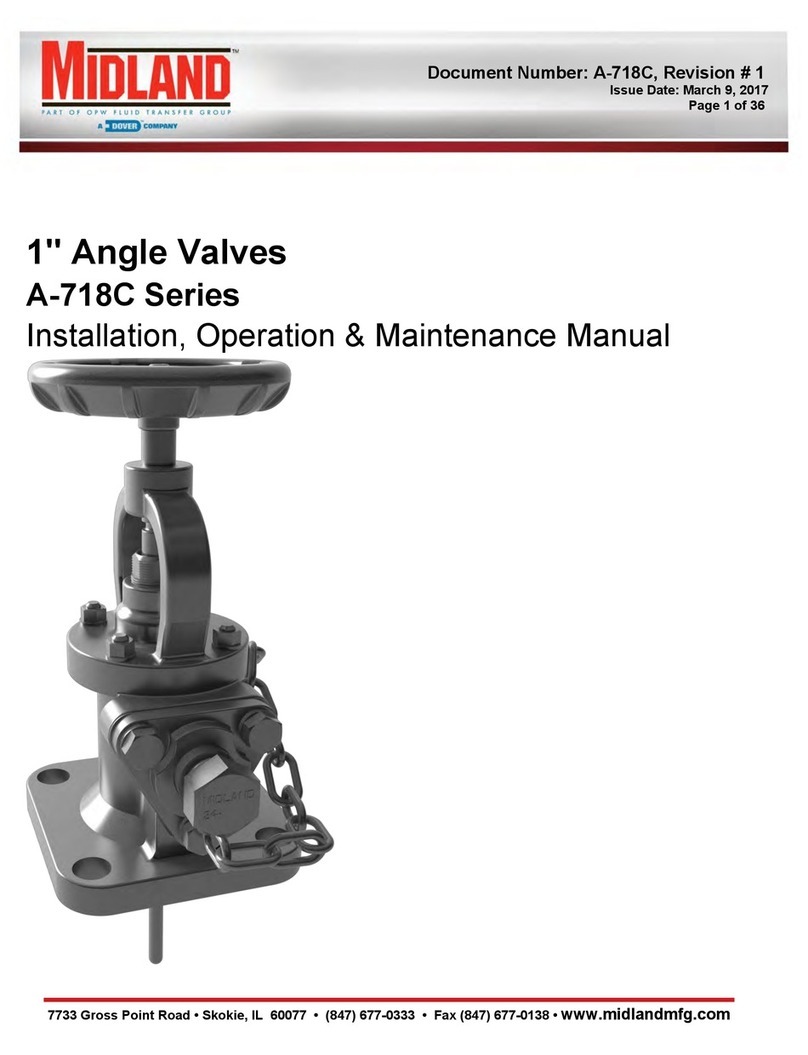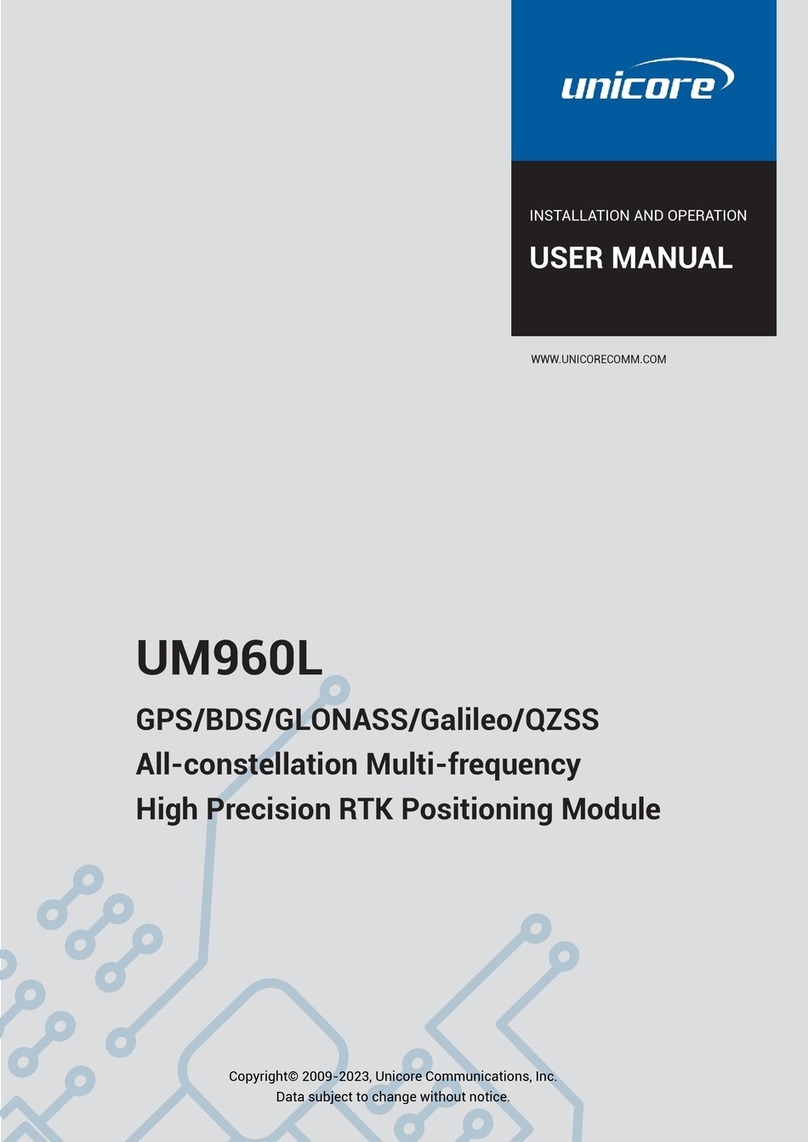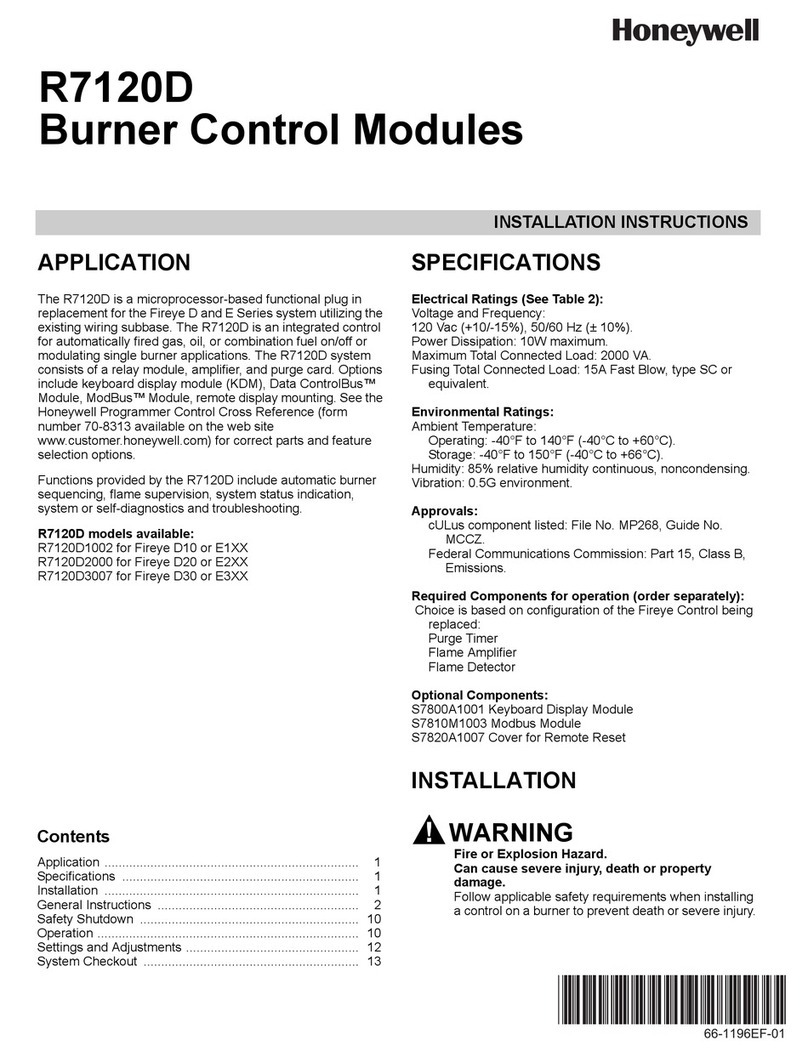Genebre 2025 User manual

Genebre Building. Av. de Joan Carles I, 46-48
08908 L'Hospitalet de Llobregat. Barcelona (Spain)
genebre@genebre.es - www.genebre.es
GENEBRE S.A. LAST UPDATE: 25/06/2010 UPDATE NUMBER: 1
1
INSTALLATION, OPERATION AND MAINTENANCE
MANUAL
3 piece Full Bore Ball Valve, Direct assembling, Threaded
ends, Butt Weld, Socket Weld and Clamp
GENEBRE Reference: 2025 - 2025N - 2026 - 2027 - 2933

Genebre Building. Av. de Joan Carles I, 46-48
08908 L'Hospitalet de Llobregat. Barcelona (Spain)
genebre@genebre.es - www.genebre.es
GENEBRE S.A. LAST UPDATE: 25/06/2010 UPDATE NUMBER: 1
2
Installation, operation and maintenance instructions
1. Product description.....................................................................................................3
2. Transport and Storage conditions .............................................................................3
3. Valve breakdown..........................................................................................................4
3.1 Drawing and Components (Art. 2025 / 2025N / 2026 / 2027....................................4
3.2 Drawing and Components (Art. 2933)......................................................................5
4. Installation instructions ..............................................................................................6
4.1) Preparation..............................................................................................................6
4.2) Assembling..............................................................................................................7
5. Operating instructions ................................................................................................8
5.1) Usage......................................................................................................................8
5.2) Manual operation ....................................................................................................9
5.3) Remote operation....................................................................................................9
6. Maintenance instructions............................................................................................9
6.1) Stem leaks..............................................................................................................9
6.2) Body/edges joints leak............................................................................................9
6.3) Line leaks (through seats).....................................................................................10
7. Reparation instructions.............................................................................................10
7.1) Disassembling.......................................................................................................10
7.2) Reassembling .......................................................................................................12
8. Torques table:............................................................................................................13
9. Hygiene and Safety Instructions: .............................................................................14

Genebre Building. Av. de Joan Carles I, 46-48
08908 L'Hospitalet de Llobregat. Barcelona (Spain)
genebre@genebre.es - www.genebre.es
GENEBRE S.A. LAST UPDATE: 25/06/2010 UPDATE NUMBER: 1
3
1. Product description.
Genebre, S.A. offers a wide range of ball valves (90º turn), designed and assembled to
handle and drive fluids in industrial procedures.
The compatibility of materials used to build the valves (see technical specifications) and
the application of valves to the different industrial processes is at user's risk. Valves will
have an optimal behaviour when working conditions do not exceed pressure and
temperature limits (pressure curve) for which they have been designed.
2. Transport and Storage conditions
Transport and storage of this type of products must be done in their original
package
VISUAL INSPECTION
Check whether during transport, unloading and placement products have suffered any
damage.
Manual valves are provided by default in an open position whereas automated valves are
usually offered in a closed position due to the standard error position NC (normally
closed). During storage it is recommended to keep them in this same position, with the
included protective wrapping to avoid damages or dirt accumulation in the ball. The wrap
must not be removed until valve is to be installed.
When possible, valves must be stored in a dry and clean environment.
If you notice any kind of anomaly during reception of the goods, contact immediately
with GENEBRE in order to determine the possible responsibilities on the issue.

Genebre Building. Av. de Joan Carles I, 46-48
08908 L'Hospitalet de Llobregat. Barcelona (Spain)
genebre@genebre.es - www.genebre.es
GENEBRE S.A. LAST UPDATE: 25/06/2010 UPDATE NUMBER: 1
4
IMPORTANT NOTE:
Before installing and/or manipulating these elements READ CAREFULLY the
enclosed instructions for use and OBSERVE all contained information. If any of
the contents is not clear enough, please contact GENEBRE, S.A.
User is responsible for the safe use of these products, as established in
present instructions for use and in the specific technical documentation of the
supplied device.
3. Valve breakdown
3.1 Drawing and Components (Art. 2025 / 2025N / 2026 / 2027)

Genebre Building. Av. de Joan Carles I, 46-48
08908 L'Hospitalet de Llobregat. Barcelona (Spain)
genebre@genebre.es - www.genebre.es
GENEBRE S.A. LAST UPDATE: 25/06/2010 UPDATE NUMBER: 1
5
Part Nr. Description Quant. Material
Spare part
(kit ref.)
1 BODY 1 AISI 316
2 COVER 2 AISI 316
3 BALL 1 AISI 316 2907
4 STEM 1 AISI 316 2905
5 SEAT 2 PTFE+15%FV
2820
6 JOINT 2 PTFE+GRAPH
2820
7 FRICTION WASHER 1 PTFE+GRAPH
2820
8 O-RING 1 VITON 2820
9 PACKING 1 PTFE 2820
10 STUFFING BOX 1 AISI 316
11 SPRING WASHER 2 AISI 301
12 NUT 2 AISI 316
13 LOCK NUT 1 AISI 304
14 STOPPER 1/4 - 2" 1 AISI 304
15 HANDLE 1 AISI 304
16 WASHER 1 AISI 304
17 COVER 1 VINIL
18 SCREW/BOLT 4 / 6 AISI 304
19 WASHER 4 / 12 AISI 304
20 NUT 4 / 12 AISI 304
21 STOPPER 2 1/2"- 4" 1 AISI 304
3.2 Drawing and Components (Art. 2933)

Genebre Building. Av. de Joan Carles I, 46-48
08908 L'Hospitalet de Llobregat. Barcelona (Spain)
genebre@genebre.es - www.genebre.es
GENEBRE S.A. LAST UPDATE: 25/06/2010 UPDATE NUMBER: 1
6
4. Installation instructions
4.1) Preparation
Remove any material remains of the valve wrapping.
Serious problems may arise with the installation of a valve in a dirty pipe.
Make sure the pipe is not dirty and doesn’t have welding particles, for example, before
installing it. This may cause irreparable damages in the valve when the equipment is
started → prepare a clean working area.
Plan beforehand enough space for future maintenance operations.
Check correct performance of the valve by turning the handle clockwise and making sure
the ball closes the fluid flow. If this is not the case, check if there are foreign particles
inside the valve and repeat the whole operation.
Part.
Nr Description Quant. Material Spare part
(ref.)
1 Body 1 CF8M ----
2 Cover 2 CF8M ----
3 Ball 1 316 ----
4 Seat 2 PTFE 2912
5 Screw 4 A193-B7 ----
6 Stem 1 316 ----
7 Antiestatic Device 2 316 ----
8 Friction washer 1 PTFE 2912
9 O-ring 1 Viton 2912
10 Packing 1 PTFE 2912
11 Washer 1 PTFE+INOX 2912
12 Stem Ring 1 304 ----
13 Belleville Washer 2 301 ----
14 Stem nut 1 304 ----
15 Lock nut 1 304 ----
16 Washer 1 304 ----
17 Handle nut 1 304 ----
18 Handle 1 304 ----
19 Lock Device 1 304 ----
20 Handle cover 1 Plastic ----
21 Gasket 2 PTFE 2912
22 Washer 4 304 ----
23 Nut 4 A194-8 ----

Genebre Building. Av. de Joan Carles I, 46-48
08908 L'Hospitalet de Llobregat. Barcelona (Spain)
genebre@genebre.es - www.genebre.es
GENEBRE S.A. LAST UPDATE: 25/06/2010 UPDATE NUMBER: 1
7
4.2) Assembling
- Art. 2025 / 2025N (threaded ends valve)
Do not disassemble the valves to install them.
Make sure the valve's pipe and thread ends are clean and are compatible one with
another. Apply an appropriate seal in the pipe threads and screw in the valve, being
careful not to tighten too much the conical threads.
Do not use the valve handle as a lever to screw the valve into the pipe.
To tighten the valve, it is recommended to use a spanner or a monkey wrench applying
force only on the hexagonal edges of the valve. It is also recommended this force to be
inferior to 30 Nm.
- Art. 2026 / 2027 (welded ends valve)
a) With the valve in a OPEN position, remove the screws (part.18), washers (part.19),
nuts (part. 20) and connection edges or cover (part.2).
b) Turn the ball until reaching the half-open position and remove the seats (part.5) and
joints (part.6) of the body (part.1) carefully. Complete the turn until closing the valve and
extract the ball (part.3). All components must be stored in a dry and clean environment.
c) Assemble back the valve edges or cover (part.2) into the body, keeping them aligned
as much as you can, using only 2 screws (part.18) diagonally opposed. Weld in least 4
different points (cross-shaped).
d) Remove the body (part.1) from the valve edges (to avoid welding temperature to
damage rod washers) and complete the welding process by making sure the covers
(part.2) are protected against welding metal spatters.
When cold, clean the edges' locking surfaces. Place the ball (part.3), seats (part.5) and
joints (part.6) on the valve's body and turn the ball into open position.
Place the valve's body between the 2 edges being careful not to scratch contact surfaces;
then, place the screws (part.18) screwing them in diagonally opposed to each other and
respecting the specified torque or peer (see Section 8.3).

Genebre Building. Av. de Joan Carles I, 46-48
08908 L'Hospitalet de Llobregat. Barcelona (Spain)
genebre@genebre.es - www.genebre.es
GENEBRE S.A. LAST UPDATE: 25/06/2010 UPDATE NUMBER: 1
8
- Art. 2933 (clamp ends valve)
It is not necessary to disassemble the valve in order to install it.
Make sure the pipe’s clamp and the cover (part.2) clamp are clean. Place the silicone
joints (art. 2987-Genebre) between the clamp ends to keep them tight and join them
together with a quick locking binding clamp (art. 2986-Genebre). There is a different joint
and binding for each valve size.
IMPORTANT INFORMATION:
Design of this type of ball bore valves allows us to install them in any position as
they are bidirectional, so the direction of fluid flow does not matter.
If possible, it is recommended to install the valve in horizontal position and the
stem (handle) upwards.
Valves do not have to support pipe's efforts so it is advisable to anticipate a good
alignment and parallelism of such pipe.
Once installed, it is recommended to open and close it a couple of times to verify
its good performance and to check if there is any obstruction in the ball that
prevents it from closing.
It is also recommended to use filters in the pipe to extend lifecycle of the valve.
5. Operational instructions
5.1) Usage
3 pieces full bore ball valves provide a leakproof lock when used adjusted to the pressure
and temperature values for which they have been designed.
Avoid by all means to leave the valves in partially open position if you are not aware of
the pressure drop and flow rate in that position, as the service life of the seat can be
reduced and/or it can be damaged due to the ball bore valve.
Any fluid that can be solidified, crystallized or polymerized should not remain in the ball
cavity as it is harmful for performance, service life of the valve and it can even render it
unusable.
Seats for the valve, joints, body, ball, stem and ends have to be fully compatible with the
fluid circulating through the valve. Otherwise, valve could be seriously damaged.
Torques required to operate valves are listed on the table in section 8.1.

Genebre Building. Av. de Joan Carles I, 46-48
08908 L'Hospitalet de Llobregat. Barcelona (Spain)
genebre@genebre.es - www.genebre.es
GENEBRE S.A. LAST UPDATE: 25/06/2010 UPDATE NUMBER: 1
9
5.2) Manual operation
When operating the valve you must avoid excessive lateral efforts with the handle.
To close it, you must turn the handle 90 degrees clockwise. When the handle is inline
with the pipe, valve is open.
In case you need to remove the handle to automate the valve, the stem (part. 4) has a
mechanized linear mark at the front part that allows us to know its current position
(opened or closed).
5.3) Remote operation
When automation of 3 piece valves is required, GENEBRE S.A. can provide a great
variety of pneumatic actuators, electric actuators, electropneumatic and electronic
positioners to cover a large range of operations.
6. Maintenance instructions
Frequency, location and process of maintenance will be determined by the user by taking
into account usage of the product. However, periodical checks explained below will be
useful to extend the service life of the valve and reduce installation problems:
Valves must not remain in open or closed position for a long period of time. It is
recommended, if the process allows for it, to proceed to an operational task for the valve
every six months.
6.1) Stem leaks
Remove the handle or actuator, the lock nut washer (part.13 / part.15 Art.2933) and
tighten the nut (part.12 / part.14 Art.2933) of the stem packing (see Section 8.2). If the
leak persists, valve should be disassembled to replace the stem washers (part.7,8,9 /
part.8,9,10,11 Art.2933).
See reparation instructions.
6.2) Body joints/edges leaks
Check if the body screws (part.18 / part.5 Art.2933) are tightened. If they were loose,
adjust them up until the recommended torques (IMPORTANT: adjustment of such screws
will have to be done at room temperature). If leak continues, it is probably due to a
damage int he body's joint or the locking surface, and it will be necessary to disassemble
the valve to repair it.
See reparation instructions.

Genebre Building. Av. de Joan Carles I, 46-48
08908 L'Hospitalet de Llobregat. Barcelona (Spain)
genebre@genebre.es - www.genebre.es
GENEBRE S.A. LAST UPDATE: 25/06/2010 UPDATE NUMBER: 1
10
6.3) Line leaks (through seats).
Check if the valve is in a completely closed position. If this is the case, leak is due to
a seat or locking surface being damaged and it will be necessary to disassemble the
valve for repairing it.
See reparation instructions.
7. Reparation instructions
7.1) Disassembling
To proceed to repair it, it is not necessary to remove the valve from the installation as the
3-pieces design for the valve allows us to remove the central part (body with all internal
components) without having to disassemble the terminals.
Prepare a clean working area and adequate tools to perform mechanical tasks.
a.- Place the valve in an OPEN position to avoid
the ball from standing out of the body and interfere
with the ends when the body is removed.
Remember that the stem has a line in the frontal
part to indicate position of the valve:
parallel to pipe → open valve,
perpendicular to pipe → closed valve,
Before disassembling the pipe's valve to repair or replace it, make sure that line
has been closed and depressurized because a bad operational procedure could
cause a serious accident to you or to the installation system

Genebre Building. Av. de Joan Carles I, 46-48
08908 L'Hospitalet de Llobregat. Barcelona (Spain)
genebre@genebre.es - www.genebre.es
GENEBRE S.A. LAST UPDATE: 25/06/2010 UPDATE NUMBER: 1
11
b.- Loosen and remove the 4 / 6 nuts (part. 20 /
part. 23 Art.2933) of the screws / studs (part.
18 / part. 5 Art.2933) that bring together the
three different parts of the valve. Remove the
screws.
B
e careful not to damage edges surfaces.
c.- Remove the central group separating it from
the covers (part. 2).
d.- Once the body is out, place the ball (part. 3)
in a half-open position (45º, for example) and
remove the seats (part. 5 / part. 4 Art.2933).
Complete the turn of the ball until closed
position and then it can be removed. This
operation has to be performed carefully,
otherwise the ball could be marked against the
body.
e.- After this, remove the body's joints (part.6 /
part. 21 Art.2933). They should be removed
being carefully not to scratch or damage the
mechanized surfaces over which they are
hermetically sealed.
f.-To disassemble the stem (part. 4 / part. 6
Art.2933), remove the following elements:
Push the stem inside the body and then remove it. Later, remove the packing (part. 9 /
part. 10 Art.2933) located inside the body. Remove the o’ring (part. 8 / part. 9 Art.2933)
from its location and also the friction washer (part. 7 / part. 8 Art.2933).
g.- Once the valve is disassembled you must verify the state of each single piece that
compose it. All pieces to be reused have to be cleaned completely and be kept in a safe
and clean environment.
Name
Art. 2025 / 2025N / 2026 /
20
27
Art. 2933
Handle nut
Part.12
Part.1
7
Dividing washer
Part.16
Part.11
Handle
Part.17
Part.1
8
Lock nut
Part.13
Part.1
5
Nut
Part.12
Part.1
4
Spring washers
Part.11
Part.1
3
Packing Part.10 Part.12

Genebre Building. Av. de Joan Carles I, 46-48
08908 L'Hospitalet de Llobregat. Barcelona (Spain)
genebre@genebre.es - www.genebre.es
GENEBRE S.A. LAST UPDATE: 25/06/2010 UPDATE NUMBER: 1
12
All locking surfaces in the ball, seats, joints and sides have to be checked for corrosion,
erosion, metallic inlays in the seats and marks. If they were damaged or in case of doubt,
they will need to be replaced.
h.- Cleaning of the valve's pieces must be done using an adequate degreasing agent.
You must be careful with the locking surfaces, for example, of the ball, locking sides of
the ends and joints, because if they were damaged this could cause a bad impact in the
valve's performance.
7.2) Reassembling
Before proceeding to reassemble the valve, make sure that reparation kit and/or pieces
to be used are appropriate and original from the factory.
When it is assembled again, cleaning is essential for a long life for the valve.
a.- Place a new friction washer (part. 7 / part. 8 Art.2933) on the stem (part. 4 / part. 6
Art.2933) and also the o-ring (part. 8 / part. 9 Art.2933) in its stem corresponding location,
lubricate the stem with a thin layer of grease or silicon (for example, Dow Corning 200)
and insert it in the valve's body (part.1), in the inside cavity, by pushing a bit to fix it.
b.- Place a new packing (part. 9 / part. 10 Art.2933) from its location in the upper cavity of
the body (part.1), the stuffing box (part. 10 / part. 12 Art.2933) and the spring washers
(part. 11 / part.13 Art.2933) with both external borders together (concave position). Place
the nut (part. 12 / part. 14 Art.2933), tighten it and turn the stem a couple of times. Then,
readjust the nut taking into account the specified torque value (see Section 8.2).
If necessary, fasten with a wrench the internal body of the stem to tighten properly the nut
without making the stem turn.
It is convenient to match one of the nut vertexes with one of the stem vertexes to be able
to insert the lock nut (part. 13 / part. 15 Art.2933) later on.
Note that if the nut is too tight, the rod torque will increase and service life of its elements
will be reduced.
c.- Place the stem in a closed valve position and insert the ball (part. 3) inside the body
(part. 1) matching the ball slot with stem milling (part. 4 / part. 6 Art.2933). Open the valve
so that the ball does not fall.
d.- New seats (part. 5 / part.4 Art.2933) and body gasket (part.6 / part. 21 Art.2933) can
now be placed on both sides of the body, always keeping flat part of the seat facing
outward.
e.- Terminals or covers (part. 2) must be clean in their sealing areas before proceeding to
final assembling.
Place the central valve group between the terminals and screw the studs/screws (part. 18
/ part. 5 Art.2933) to bring together the three different parts of the valve.

Genebre Building. Av. de Joan Carles I, 46-48
08908 L'Hospitalet de Llobregat. Barcelona (Spain)
genebre@genebre.es - www.genebre.es
GENEBRE S.A. LAST UPDATE: 25/06/2010 UPDATE NUMBER: 1
13
It is really important that all pieces, such as covers (part. 2), ball (part. 3) and seats (part.
5 / part. 4 Art.2933) are completely aligned inside.
f.- Then, proceed to place the nuts (part. 12 / part. 23 Art.2933) adjusting slowly and
alternating diagonal and evenly until obtaining the recommended tightening torque (see
Section 8.3).
8. Torque table:
8.1) Torques to activate the valves:
MEASURE
Activating torque (N.m.)
1/4” 4 – 5
3/8” 4 – 5
1/2” 4 – 5
3/4” 7 – 8
1” 9 – 10
1 ¼” 12 – 14
1 ½” 18 – 20
2” 28 – 30
2 ½” 34 – 36
3” 58 – 60
4” 90 – 95
8.2) Torques for the stem nut:
Following numerical data is provided as reference only. Specified torques are the ones
used to activate the assembled stem before assembling ball and seats.
Valve size Activating torque
(N.m.)
1/4" - 3/8” - 1/2" 6 - 9
3/4" - 1” 8 - 12
1 ¼” - 1 ½” - 2” 13 - 18
2 ½” - 3” - 4” 19 - 24,5

Genebre Building. Av. de Joan Carles I, 46-48
08908 L'Hospitalet de Llobregat. Barcelona (Spain)
genebre@genebre.es - www.genebre.es
GENEBRE S.A. LAST UPDATE: 25/06/2010 UPDATE NUMBER: 1
14
8.3) Tightening torque Screws/ Nuts for joining the valve's different parts:
It is required for all body screws to make contact of body metal against cover metal.
Valve size Screw / Nut Activating torque (N.m.)
1/4" - 3/8” - 1/2" M6 8 - 11
3/4" - 1” M8 13,5 - 16
1 ¼” - 1 ½” - 2” M10 22 - 25
2 ½” - 3” - 4” 1/2" W 74,5 - 81
9. Hygiene and Safety Instructions:
9.1) Fluids that go through a valve can be corrosive, toxic, flammable or pollutant.When
operating valves, you must follow the security instructions and it is recommended to use
personal protection gadgets:
1) Protect your eyes.
2) Wear gloves and appropriate working clothes.
3) Wear safety footwear.
4) Wear a helmet.
5) Have running water at hand.
6) To operate flammable fluids, make sure you have an extinguisher at hand.
Before removing a valve from a pipe, always check if the line is completely
drained and depressurized.
9.2) Always operate the valve in open position to make sure there is no pressure in the
internal cavity.
9.3) Any valve being used by toxic services department needs to obtain a cleanliness
certificate before being operated.
This manual suits for next models
4
Table of contents
Other Genebre Control Unit manuals

Genebre
Genebre 2101 User manual
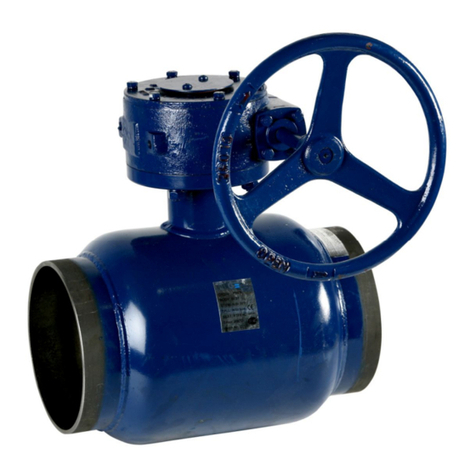
Genebre
Genebre 2035 Guide

Genebre
Genebre 2528AV User manual
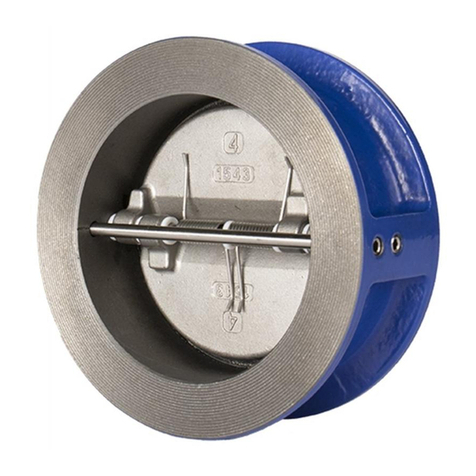
Genebre
Genebre 2402 Instruction manual

Genebre
Genebre 2940 User manual

Genebre
Genebre 2052 User manual

Genebre
Genebre 2220 User manual

Genebre
Genebre 2934 User manual
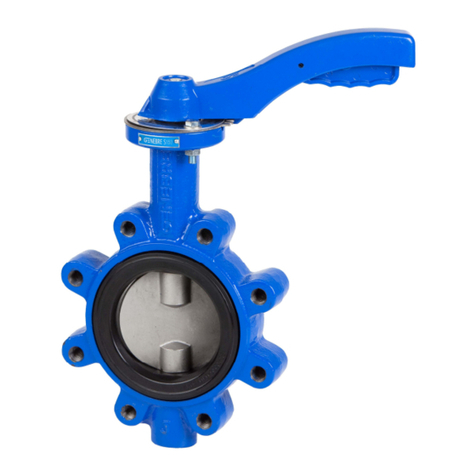
Genebre
Genebre 2108 User manual

Genebre
Genebre 2113 User manual

Genebre
Genebre 2453 User manual
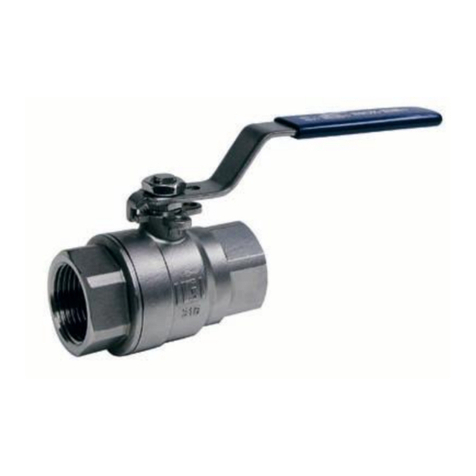
Genebre
Genebre 2009 User manual

Genebre
Genebre 2231 User manual

Genebre
Genebre 2528V User manual
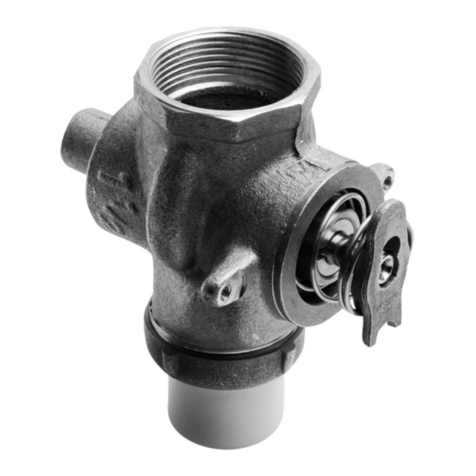
Genebre
Genebre 1054 08 User manual

Genebre
Genebre 2415 User manual
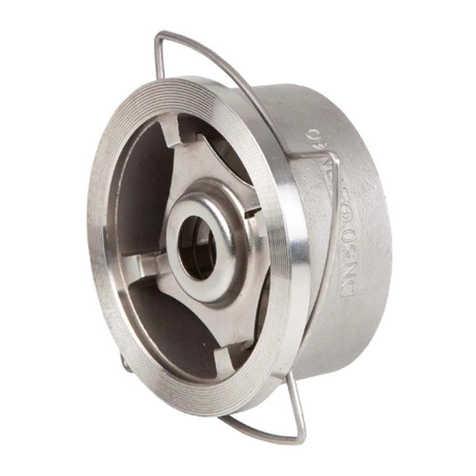
Genebre
Genebre 2415 User manual

Genebre
Genebre 2233N User manual

Genebre
Genebre 2272 User manual

Genebre
Genebre 2102 User manual





